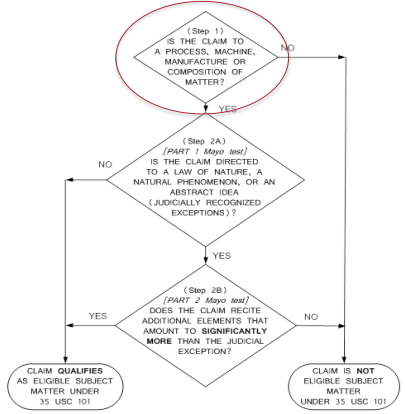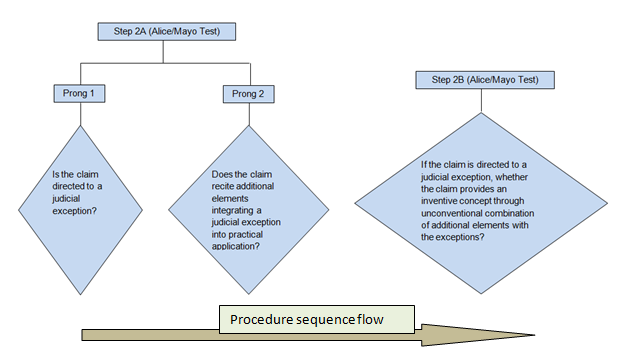During the patent prosecution process, a very important factor is the subject matter eligibility. In simple words, it explains how office personnel at the USPTO should evaluate patent claims.
At the start of 2019, January 7 to be precise, the USPTO revised its guidance to provide more clarity on the subject matter eligibility criteria (35 U.S.C 101). The purpose was to remove ambiguity about the understanding of the same. These changes consolidate several judgments passed by the Supreme Court for many patent cases with unique situations. These cases were judicial exceptions and the new rules clear any confusion regarding the judgments for those cases. The new rules will aid the examiners to be more certain
So what is subject matter eligibility and what are the new changes in it? Let’s find out.
Related Article: How to Write a Patent?
Subject Matter Eligibility: A Quick Understanding
Subject Matter eligibility outlines the rules which define whether or not an invention meets the patentability criteria. The 35 U.S.C 101 law defines the patentable subject matter in the following way:
“Whoever invents or discovers any new and useful process, machine, manufacture, or composition of matter, or any new and useful improvement thereof may obtain a patent therefor, subject to the conditions and requirements of this title.”
A patent examiner follows the Alice/Mayo Test and views this statement in 2 steps. The first step checks whether the invention is a process, machine, manufacture or composition of matter. The second step is that the invention should not fall into any exception recognized by the courts. These exceptions mean that you cannot call laws of nature, physical phenomena or abstract ideas as inventions.

Fig. 1: Subject Matter Eligibility as per 35 U.S.C 101 (Courtesy: USPTO)
You must ensure that your invention follows the patentability criteria otherwise it is more than likely to face rejection.
Related Article: All you must know on Antecedent Basis
Subject Matter Eligibility: Why is Change Needed?
Despite these guidelines, there is room for confusion and interpretation in the understanding of judicial exceptions. There have been multiple patent cases where the verdict was incoherent with the 35 U.S.C 101. Therefore, it was difficult to apply a single standard judicial precedent in every case with maximum certainty.
Also, this set-up provides only a single-point reference to identity judicial exceptions. Therefore, identifying or eliminating a claim by comparing the current set of claims with a previous set has a lot of issues. This is because this process is time-consuming, error-prone and incoherent.
Related Article: Office Action Causes and Their Response
Subject Matter Eligibility: The Modifications
These changes address the shortcomings of the existing guidelines. It also ensures a more efficient and effective method for conducting the patent examination.
These changes focus mostly on Step 2A and 2B of the Alice/Mayo test. It explains that the subject matter that can be considered as an abstract idea by broadly grouping them into three categories. Also, it clarifies that an individual claim, with reference to the complete invention, is not a judicial exception if the claim in a certain scenario. That is, if the claim, along with additional elements, integrates a judicial exception into a practical application (Prong 1 & 2 of Step 2A).
Besides, an invention that is directed towards judicial exceptions may still be patent-eligible. However, there must be additional element(s) which will be examined independently in combination with the exception. Ultimately, their use in relation to the judicial exception should be unconventional and establish an inventive concept. This will make the invention patent-eligible.
The importance of these elements in comparison with the overall invention is not absolutely pivotal for determining eligibility. However, these elements should impose a meaningful limit on the exceptions and not just be a drafting technique. This is important in order to avoid objection (Step 2B).

Fig. 2: Procedure Sequence Flow, Courtesy: Legal Advantage
This is not all. The Eligibility Quick Reference Sheet Identifying Abstract Ideas is more or less obsolete now. This is because this new method of grouping abstract idea is proving to be more beneficial in providing clarity for subject matter eligibility.
Related Article: Omnibus Claim: Importance of Narrow and Broad Claim Scope
Conclusion
These modifications have made the patent examination simpler. The procedure is rather easy to follow and contains more details.
It not only helps the USPTO officials, but also the judges as well as applicants as it provides better transparency about the procedure. Thus, this has been a huge aid in providing a complete understanding of 35 U.S.C 101 and has balanced the playfield for all applications.
Need a Professional to Draft your Application? – Patent Drafting Catalyst
We’ve given you the latest changes to the subject matter eligibility. However, drafting your application by yourself can be tricky. Therefore, it is highly advisable to hire a professional. Our team boasts 10+ years of experience in supporting patent prosecution with 200+ full-time patent engineers in 30+ technology areas. Our experience includes working with multiple patent attorneys/Firms from multiple countries for patent drafting.
We are always up-to-date about the latest laws and acceptable practices. Our patent engineers understand the importance of comprehensive patent claims in terms of patent commercialization and infringement litigation. We ensure that we draft excellent quality patent applications with the best results. There will also be no surprise billing so that you only the fee that you fix with us and we ensure that our prices are economical.
To make an inquiry, visit the Patent Drafting Catalyst Services.
Other Related Articles:
Patent Novelty Search (Complete Guide for 2020)
Why is Patent Docketing Important?
Important Tips and Tricks to Remember about Patent Illustrations
